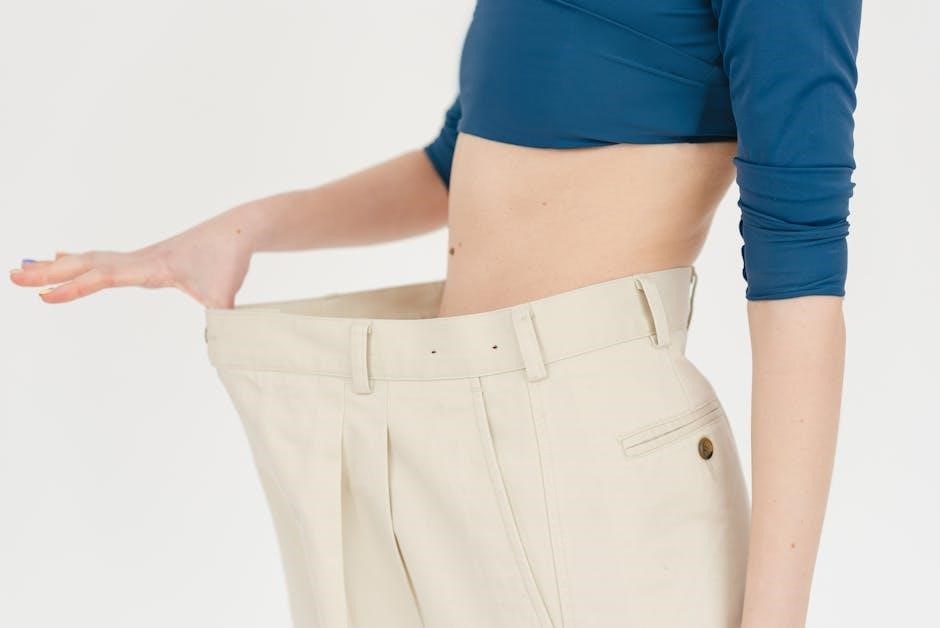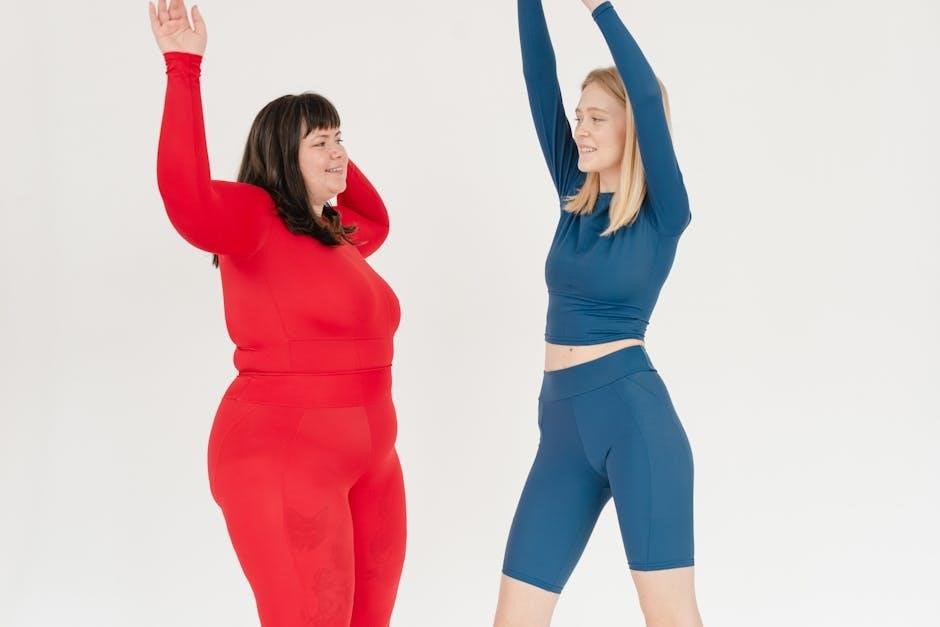
A Hurley size guide helps players choose the right hurley for their needs, ensuring optimal performance and safety. It caters to adults, youth, and varying skill levels.

Height and Age Considerations
Height and age are key factors in selecting the right hurley. Adults typically range from 170-183 cm, while youth sizes cater to ages 6-16, ensuring proper fit.
2.1 For Adults
For adults, hurley size is primarily determined by height, with options ranging from Regular (170-183 cm) to Tall (183-192 cm). Taller players often prefer longer hurleys for better reach and control. Strength and skill level also influence size selection, as more experienced players may opt for lighter or heavier hurleys based on their performance needs. Proper fit ensures comfort and effectiveness during gameplay, making it crucial to align the hurley size with individual physical characteristics. Adults should consider their playing style and position when choosing the ideal hurley length and weight for optimal performance on the field.
2.2 For Youth
For youth, hurley size is tailored to their age and height to ensure proper development and comfort. Young players typically start with smaller, lighter hurleys that are easier to handle. As they grow, the hurley size can be adjusted to match their increasing height and strength. For children under 12, hurleys are usually shorter and more lightweight, while teenagers may use slightly longer models. The goal is to provide a hurley that allows for skill development without causing discomfort or fatigue. Proper fit is crucial for young players to build confidence and technique effectively. Regular adjustments may be needed as they grow taller and stronger.

Weight Considerations
Weight plays a crucial role in selecting a hurley, impacting balance and swing. Lighter hurleys suit younger or less physically strong players, while heavier ones are for experienced adults.
3.1 For Adults
For adults, the weight of a hurley should align with their strength and playing style. Lighter hurleys, typically made from ash wood, are ideal for quicker swings and better control. Heavier options may suit stronger players or those requiring more power. Proper weight distribution ensures balance, reducing fatigue. Adults should consider their fitness level and position when selecting weight, as it impacts performance and durability. Testing different weights is recommended to find the perfect fit, ensuring both comfort and effectiveness during gameplay.
3.2 For Youth
For youth players, selecting the right hurley weight is crucial for skill development and safety. Younger players typically require lighter hurleys to handle easily, ensuring proper technique and reducing fatigue. As children grow, their strength increases, allowing them to manage slightly heavier options. The weight should align with their age, height, and physical ability. Lightweight hurleys made from durable materials are ideal for youth, as they provide the necessary balance between control and durability. Proper fit ensures young players can develop their skills effectively while minimizing the risk of injury. Testing different weights and sizes is recommended to find the perfect match for their growth stage.

Skill Level and Its Impact
Skill level significantly influences hurley size selection. Beginners may opt for lighter, shorter hurleys for better control, while advanced players often prefer longer, heavier options for power.
4.1 Beginners
For beginners, selecting the right hurley size is crucial to develop proper technique and confidence. A hurley that is too long or heavy can hinder performance and increase the risk of injury. Lighter materials, such as ash wood, are often recommended for better control and maneuverability. The length should be proportionate to the player’s height, allowing for comfortable swinging and striking. Additionally, a smaller grip size can help younger or less experienced players maintain a firm hold without straining their hands. It’s important for beginners to prioritize a balanced hurley that enhances learning and adaptability as they progress in the sport.
4.2 Intermediate Players
Intermediate players benefit from a hurley that balances control and power, allowing for precise strikes and fluid movement. The hurley length should align with the player’s height, typically ranging from 70 to 80 cm for adults, ensuring optimal swing dynamics. A medium-weight hurley, often crafted from durable ash wood, is ideal for this group, as it provides both maneuverability and striking force. The grip size should be moderate, offering firm control without limiting wrist movement. Intermediate players can also experiment with slightly heavier hurleys to build strength and technique. Proper sizing enhances performance, enabling better accuracy and endurance during matches. Avoiding overly long or heavy hurleys is key to maintaining agility and precision.
4.3 Advanced Players
Advanced players require a hurley that maximizes precision, power, and control. The ideal length typically ranges from 80 to 85 cm, allowing for strong, accurate strikes while maintaining agility. A hurley made from high-quality, lightweight materials, such as seasoned ash wood, is preferred for its durability and responsiveness. The balance point should be slightly lower for advanced players, enabling quick hand movements and precise ball control. Grip size remains crucial, with a slightly smaller circumference to allow for intricate stickwork. Customization options, such as tailored weights and balances, can further enhance performance for seasoned players. Proper sizing ensures advanced techniques are executed efficiently, making the hurley an extension of the player’s skill.
Hand Size and Grip
Hand size and grip play a crucial role in controlling the hurley. Proper fit ensures comfort, control, and optimal performance for both adults and youth players.
5.1 For Adults
For adults, hand size and grip are critical for controlling the hurley. Proper fit ensures comfort and optimal performance. Measure hand span from thumb to pinky tip. Adults with larger hands may prefer a slightly thicker grip for better control. A secure grip reduces fatigue during prolonged play. The thumb should oppose the fingers firmly for precise handling. Players with smaller hands may need a narrower grip to maintain dexterity. Custom grips or tapes can enhance comfort. Ensuring the right fit prevents blisters and improves accuracy. Proper hand positioning also enhances safety, reducing the risk of injury. Regular practice with the correct grip strengthens technique and confidence.
5.2 For Youth
For youth, selecting the right hand size and grip is essential for proper skill development. Young players typically have smaller hands, requiring a narrower grip. A well-fitted hurley ensures comfort and better control. Measure the hand span to determine the ideal grip size. A secure grip helps prevent the hurley from slipping during play. As children grow, their hand size increases, so regular adjustments may be needed. Proper fit enhances safety and performance. Encourage youth to practice gripping techniques to build strength and coordination. A correctly sized hurley for young players fosters confidence and improves their overall game experience.

Hurley Length and Balance
Proper hurley length ensures reach and control, while balance affects handling. The right combination enhances performance, making the hurley an extension of the player’s technique.
6.1 How to Choose the Right Length
Choosing the right hurley length involves measuring from the ground to the tip of the handle while standing upright. For adults, lengths typically range between 70cm to 85cm, depending on height. Youth hurleys are shorter, usually between 55cm to 65cm. Proper length ensures the hurley reaches the shoulder when held correctly. A hurley that is too long can be cumbersome, while one that is too short may limit reach and control. Balance is also crucial, as it affects handling and maneuverability. Standing and gripping measurements are key to determining the ideal fit. Incorrect length can hinder performance and safety, so consulting a size chart or expert advice is recommended.
6.2 Understanding Balance
Balancing a hurley involves finding the optimal weight distribution between the handle (bas) and the blade. A well-balanced hurley enhances control and maneuverability. Players should hold the hurley gently and swing it to feel its balance point. The ideal balance allows for smooth striking and catching. Forwards may prefer a slightly heavier blade for power, while midfielders and defenders often favor a more evenly distributed weight for versatility. Incorrect balance can lead to fatigue or reduced precision. Testing different hurleys and adjusting based on personal comfort is essential. Proper balance ensures the hurley feels natural during play, improving overall performance and reducing the risk of errors.

Material and Weight
Material and weight significantly impact a hurley’s performance. Traditional ash wood is durable and balanced, while modern composite materials offer lighter options for speed and agility.
7.1 Different Materials Available
Hurleys are crafted from various materials, each offering unique benefits. Traditional ash wood is the most common, prized for its durability, flexibility, and balanced weight. Modern options include composite materials, which blend wood with synthetic fibers for enhanced strength and a lighter feel. Hybrid models combine ash with carbon fiber, offering a mix of tradition and innovation. Aluminum hurleys are also available, though less popular due to their rigidity and higher weight. The choice of material depends on the player’s preference, skill level, and the desired performance characteristics. Each material type caters to different needs, ensuring there’s a hurley to suit every player’s style and requirements.
7.2 How Material Affects Weight
The material of a hurley significantly influences its weight, impacting gameplay. Ash wood hurleys are naturally balanced, offering a traditional feel with moderate weight. Composite materials, blending wood and synthetic fibers, are lighter, enhancing speed and maneuverability. Hybrid models, combining ash with carbon fiber, strike a balance between weight and durability. Aluminum hurleys, while durable, are the heaviest and less popular due to their rigidity. The choice of material directly affects the hurley’s weight, which can influence performance based on the player’s strength, skill level, and playing style. Lighter hurleys are ideal for speed and agility, while heavier options may suit those prioritizing power and control.

Player Position and Hurley Size
Hurley size varies by position, with forwards needing shorter sticks for agility, midfielders requiring balanced lengths, and defenders using longer hurleys for reach and control.
8.1 Forwards
Forwards typically require a hurley that allows for quick handling and precision striking. The ideal length for forwards is shorter, enabling better agility and control during fast-paced gameplay. A lighter hurley is often preferred to facilitate swift movements and accurate shots. The balance point should be closer to the bas, allowing for effective wrist action and ball control. Players in this position benefit from a hurley with a smaller grip diameter for enhanced maneuverability. Additionally, forwards should consider a hurley made from durable materials to withstand frequent contact and impacts during matches. Proper sizing ensures optimal performance and reduces the risk of fatigue or injury.
8.2 Midfielders
Midfielders need a hurley that balances both offensive and defensive requirements. They often prefer a medium-length hurley, which offers versatility for both striking and hooking. A moderate weight is ideal, providing enough strength for long strikes while maintaining agility. The balance point should be centered, allowing for quick transitions between attacking and defending. Midfielders benefit from a slightly larger grip to handle the hurley securely during high-intensity plays. Durability is key, as midfielders are frequently involved in physical battles for possession. Proper sizing ensures they can cover the field effectively without fatigue. This balance of length, weight, and grip size is crucial for midfielders to excel in their versatile role.
8.3 Defenders
Defenders require a hurley that emphasizes strength and control for defensive plays. A slightly shorter hurley is often preferred, allowing for better maneuverability in tight spaces. The weight should be on the heavier side to provide additional power for clearing the ball. The balance point should be closer to the base for added stability and durability; A thicker grip can enhance control during hooks and blocks. Defenders also benefit from a hurley made of denser materials to withstand physical collisions. Proper sizing ensures defenders can effectively shield the goal and disrupt opponents without sacrificing mobility. The right hurley size is crucial for defenders to excel in their protective role.

Measuring Your Hurley
Measure the hurley from the ground to the top of the grip while standing upright. The standard length is typically between 70-100cm, depending on player height and preference.
9.1 Standing Measurement
To measure your hurley accurately, stand upright and hold the hurley by its base. The top of the hurley should reach the top of your forehead. This ensures the hurley is proportionate to your height, providing optimal control and balance. For adults, the standard length typically ranges between 70cm to 100cm, while youth sizes are shorter, around 50cm to 70cm. The standing measurement is crucial as it determines how the hurley will perform during play, affecting both striking power and maneuverability. Proper fit ensures comfort and effectiveness, making it a foundational step in selecting the right hurley for any player.
9.2 Gripping Measurement
Gripping measurement is crucial for comfort and control. Adults typically hold the hurley with hands 15-20cm apart, while youth prefer a narrower 10-15cm grip. The base hand should be at the end, and the top hand near the head. Proper gripping ensures better striking and ball control. For adults, handle thickness is usually 75-80mm, while youth sizes are thinner, around 60-70mm. Personal preference may vary, but correct grip size prevents fatigue and enhances performance. Always test grip comfort before finalizing your hurley choice to ensure optimal playability.

Common Mistakes to Avoid
Common mistakes include overlooking height, weight, and skill level when selecting a hurley, leading to poor fit and performance. Avoid these errors for better results.
10.1 For Adults
Adults often overlook proper height and weight considerations, leading to discomfort and reduced performance. Many choose a hurley based on standard sizes without measuring. This can result in a hurley that is too long or too short, affecting balance and control. Players may also ignore their skill level, with beginners opting for advanced-length hurleys and vice versa. Additionally, adults might not consider hand size and grip, leading to improper handling. It’s crucial to measure accurately and prioritize comfort. Avoid assuming size based on brand variations or personal preference alone. Proper fit ensures better performance and safety, making it essential to follow the size guide carefully.
10.2 For Youth
For youth, common mistakes include using a hurley that’s too long or heavy, which can hinder skill development and lead to fatigue. Parents often choose sizes based on their child’s age rather than measuring their height and reach. This can result in a hurley that’s impractical for the child’s current abilities. Additionally, youths may not consider their hand size, leading to improper grip and reduced control. It’s important to prioritize a hurley that allows for growth while maintaining manageability. Avoid oversized hurleys, as they can discourage young players from improving their technique. Ensuring a proper fit is key to fostering enjoyment and progression in the sport.
A proper fit is essential for optimal performance, safety, and overall enjoyment of the sport. It ensures the hurley feels natural, enhancing both skill development and confidence.
11.1 For Performance
A properly fitted hurley significantly enhances performance by improving control, accuracy, and power. It allows players to wield the stick with precision, facilitating better technique and fluidity in gameplay. A hurley that is too long or too short can hinder movement and coordination, making it difficult to strike or block effectively. The right size ensures optimal balance, enabling players to perform complex maneuvers with ease. Additionally, a well-fitted hurley reduces fatigue during prolonged play, allowing for sustained energy and focus. This directly translates to improved overall performance, making it a critical factor for players aiming to excel in their sport.
11.2 For Safety
A properly sized hurley is crucial for safety, as it reduces the risk of accidents and injuries during play. A hurley that is too long or too short can lead to loss of control, increasing the likelihood of accidental strikes to oneself or others. The correct fit ensures better grip and handling, minimizing the chance of the hurley slipping or swinging unpredictably. Additionally, a well-fitted hurley reduces strain on the wrists and shoulders, lowering the risk of overuse injuries. Proper sizing also promotes better posture and technique, further enhancing safety. Prioritizing the right hurley size is essential to protect both the player and others on the field, making it a vital consideration for safe gameplay.

Additional Considerations
Personal preference and brand variations play a role in hurley size selection, ensuring a tailored fit for individual comfort and performance needs.
12.1 Personal Preference
Personal preference significantly influences hurley size selection. Players often prioritize comfort, weight, and balance based on their playing style. Some prefer lighter hurleys for agility, while others opt for heavier options for added power. The feel of the hurley in hand, including grip size and material, is crucial. Individual preferences may also extend to the hurley’s aesthetics, such as color or design, which can boost confidence. It’s important to try different options to find the perfect fit, ensuring both performance and satisfaction. This personalized approach enhances overall gameplay and player enjoyment.
12.2 Brand Variations
Brand variations play a significant role in hurley size selection, as different manufacturers offer unique features and sizing options. Some brands cater to specific player positions or skill levels, while others focus on innovative materials or designs. For instance, certain brands may prioritize lightweight hurleys for agility, while others emphasize durability for long-term use. Additionally, some brands incorporate advanced technology, such as ergonomic grips or balanced weight distribution, to enhance performance. Players are encouraged to explore various brands to find the one that best aligns with their personal preferences and playing style. This diversity ensures that there is a hurley to suit every player’s needs.